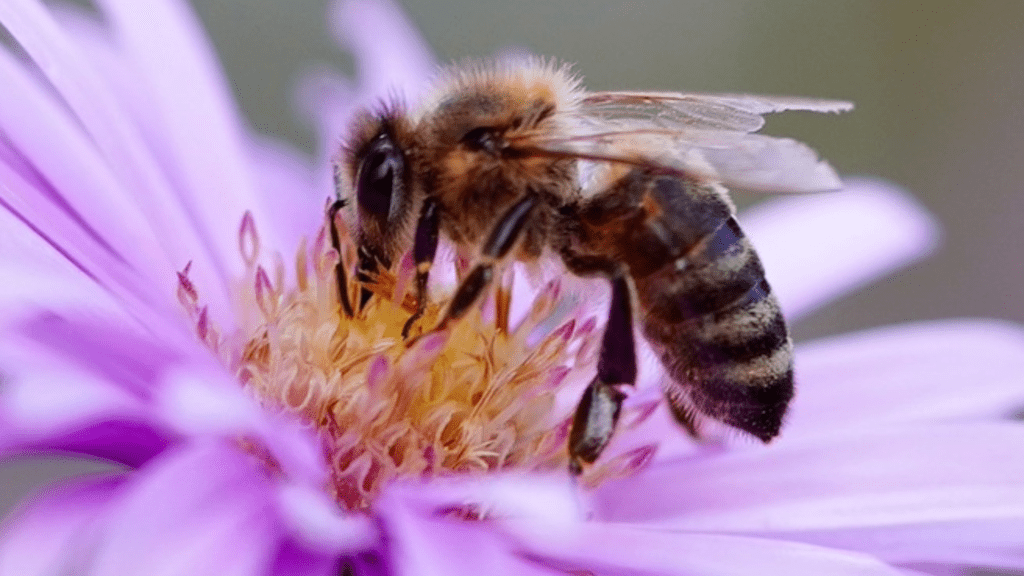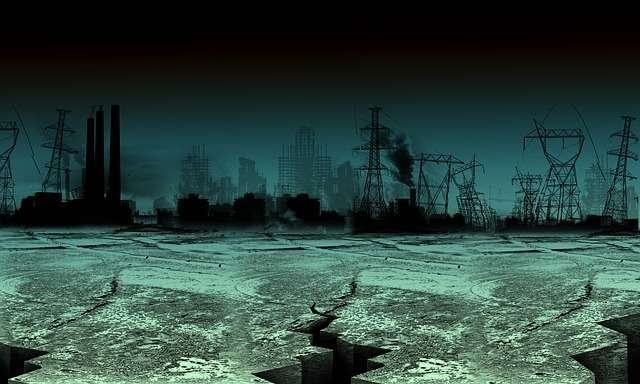Saving The Worlds Bee Populations.
Today I am buzzing with excitement as
I ask you to join me and delve into the fascinating world of bees. Bees play a crucial role in our ecosystem,
pollinating plants and ensuring the production of our delicious fruits, veggies
and beautiful flowers.
Unfortunately, a number of factors,
including habitat loss, pesticide use, and climate change, have contributed to
a decline in bee populations in recent years.
So with this article, we will explore which
bee populations need our help the most around the world and the various ways in
which we can help save bee populations and make our homes, business, towns,
cities and countries more bee-friendly.
Why Bees are Important.
Bees are not just adorable insects;
they are essential for the survival of our planet. As they go from flower to
flower collecting nectar, bees inadvertently transfer pollen, allowing plants
to reproduce.
This process, known as pollination, is
responsible for the growth of fruits, vegetables, and nuts. In fact, it is
estimated that bees contribute to the pollination of one-third of the food we
consume!
Without bees, our grocery store
shelves would be significantly emptier, and our diets would lack diversity.
Additionally, bees also play a vital
role in maintaining biodiversity by pollinating wildflowers and contributing to
the overall health of ecosystems.
The many active threats to
Bee Populations.
Unfortunately, bee populations
worldwide are facing numerous challenges that are impacting their survival. One
of the primary threats is habitat loss.
Bees rely on diverse habitats,
including meadows, forests, and gardens, for foraging and nesting. However,
urbanization and intensive agriculture have led to the destruction of these
habitats, leaving bees with limited food sources and nesting sites.
Pesticide use is another significant
concern. Certain pesticides, such as neonicotinoids, can be toxic to bees and
other pollinators. These chemicals are commonly used in agriculture to protect
crops from pests but unintentionally harm beneficial insects like bees.
Climate change is also affecting bee
populations. Rising temperatures and changing weather patterns disrupt the
timing of flowering plants, creating a mismatch between bees and their food
sources. This can lead to food scarcity for bees and impact their reproductive
cycles.
The 3 Most Threatened Bee
Populations in the World.
1. The Rusty Patched
Bumble Bee.
The Rusty Patched Bumble Bee, once
abundant across North America, is now critically endangered. Loss of habitat,
pesticide use, climate change, and disease have all contributed to its decline.
This bee plays a crucial role in pollinating native plants and crops, making
its conservation vital for maintaining biodiversity and food security.
2. The Western Honey Bee
The Western Honey Bee, also known as
the European Honey Bee, is one of the most economically important pollinators
worldwide. However, it faces numerous threats, including habitat loss,
pesticide exposure, parasites, and diseases such as Colony Collapse Disorder.
These factors have led to significant declines in honey bee populations,
impacting agricultural productivity and food availability.
3. The Wallace’s Giant Bee.
Wallace’s Giant Bee, the world’s
largest bee, is listed as endangered. This magnificent species, native to
Indonesia, faces habitat destruction due to deforestation and illegal logging.
The loss of its primary habitat, coupled with limited reproductive rates, puts
this unique bee at great risk of extinction.
What’s causing the Bee
Population Decline?
4 major factors are contributing to
the decline of bee populations worldwide such as:
1. Habitat
Loss: Urbanization, intensive agriculture,
and deforestation have resulted in the loss of bee-friendly habitats. Bees rely
on diverse landscapes with ample sources of nectar and pollen. By preserving
and creating suitable habitats, we can provide bees with the resources they
need to thrive.
2. Pesticide
Use: The widespread use of pesticides,
particularly neonicotinoids, poses a significant threat to bees. These
chemicals can impair bees’ navigation, foraging ability, and reproductive
success. Adopting organic farming practices and reducing pesticide usage can
help protect bee populations.
3. Climate
Change: Yes folks, climate change is
real. Climate change disrupts the
delicate balance of ecosystems, affecting bee populations. Rising temperatures,
altered rainfall patterns, and extreme weather events can impact the
availability of flowering plants and disrupt bee foraging. Mitigating climate
change through sustainable practices is crucial for preserving bee habitats.
4. Diseases
and Parasites: Bees are susceptible to
various diseases and parasites, including Varroa mites and fungal infections.
These pests weaken bee colonies and contribute to population declines. Regular
monitoring, proper hive management, and the development of disease-resistant
bee strains are essential for combating these threats.
What Can We Do to Help our
little Bee Friends?
As individuals and communities, we can
take all sorts of actions to help protect and support bee populations:
a) Plant
Bee-Friendly Gardens: Creating gardens
with a variety of native plants that bloom throughout the year provides bees
with a consistent source of food. Avoiding the use of pesticides and herbicides
in these gardens ensures a safe environment for bees.
b) Plant
Bee-Friendly Flowers: By planting a
variety of bee-friendly flowers in your garden or even in pots on your balcony.
Bees are attracted to bright, colorful flowers with a good supply of nectar and
pollen. Some examples of bee-friendly flowers include lavender, sunflowers,
daisies, and wildflowers.
c) Support Your
Local Beekeepers: Purchasing locally
produced honey and other bee-related products from your friendly neighborhood beekeepers
helps sustain their livelihoods and promotes beekeeping practices that
prioritize bee health and conservation.
Fresh local honey tastes fantastic and because you are supporting
beekeepers in your area, you get a good feeling from using their products
too. Beekeepers play a vital role in bee
conservation by providing safe habitats and managing colonies responsibly. By
purchasing their products, you are directly contributing to the welfare of bees
and supporting their keepers.
d) Advocate for
Bee-Friendly Policies and Procedures: Supporting
companies and farmers that have policies and procedures designed to help protect
bee habitats, regulate pesticide use, and promote sustainable agriculture can
make a significant impact. Contacting local representatives and raising
awareness about the importance of bees can drive positive change.
e) Don’t use
Pesticides at home: Reduce or eliminate
the use of pesticides in your garden. Instead, opt for natural alternatives
such as companion planting, which involves growing plants that repel pests or
attract beneficial insects. Additionally, encourage the presence of natural
predators like ladybugs and lacewings, which help control pest populations.
f) Provide
Nesting Sites in your Garden: Bees
need suitable nesting sites to lay their eggs and raise their young. You can
create bee-friendly habitats by leaving areas of your garden undisturbed,
providing bare patches of soil, or even installing bee houses or bee hotels.
These structures offer shelter and protection for solitary bees, which make up
the majority of bee species.
g) Educate others
about the importance of Bees: Spread
awareness about the critical role bees play in our ecosystems and food production.
Encourage others to take action by sharing information, organizing workshops,
or participating in community events focused on bee conservation.
h) Get
Involved in Citizen Science: Participating
in citizen science projects, such as monitoring bee populations or contributing
to bee research, allows individuals to contribute valuable data and support
scientific efforts to understand and protect bees.
The decline of bee populations is a global concern that demands
immediate attention by you, me and everyone else that enjoys living on this rock.
By understanding the most threatened bee
species and the causes behind their decline, we can take informed action to
protect these vital pollinators.
Through collective efforts to preserve
habitats, reduce pesticide use, mitigate climate change, and promote bee-friendly practices, we can
secure a future where bees thrive, ensuring the health of our ecosystems and food systems.
Bees are incredible creatures that
deserve our attention and protection. Sure, changing the world is super hard
but we can take some quite simple steps to make our homes more bee-friendly and
support bee conservation efforts in
your area.
We can all contribute to the
well-being of these essential pollinators;
we just need to figure a way that best suits you and your lifestyle. Let’s
remember that gorgeous little busy bees
buzzing around our garden truly the bee’s knees!
Lastly, thank you so much for reading this
particular blog post. If you have any
questions or want to share some additional tips and tricks for helping save bee
populations, feel free to leave a comment below.
Together, we can and must make a difference!








